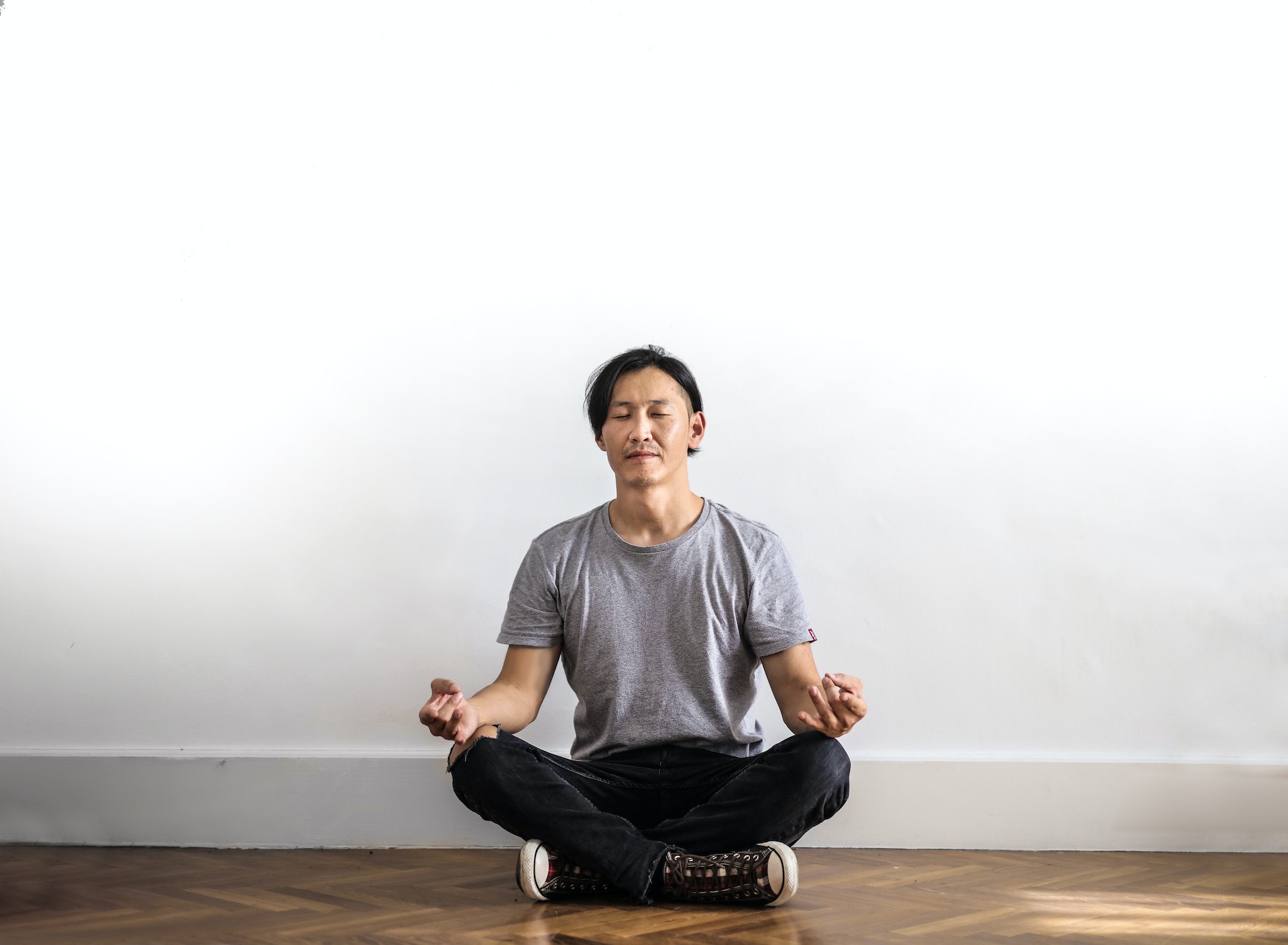In the realm of meditation, where inner exploration often takes precedence, a rising star called Exteroception Meditation is capturing attention.
This intriguing practice invites us to turn our gaze outward, embracing the world around us as a focal point for mindfulness.
In this article, we’ll delve into the depths of exteroceptive meditation, uncover its benefits, explore techniques, and discern its differences from its close counterpart, interoception.
What is Exteroceptive Meditation?
Exteroception, often referred to as our “sixth sense,” involves perceiving and understanding external stimuli through our senses – sight, sound, touch, taste, and smell.
Exteroceptive meditation leverages these senses to anchor our awareness in the present moment, providing an alternative avenue for mindfulness.
Where traditional meditation methods may center on introspection, exteroceptive meditation encourages us to cultivate awareness of our environment. It’s like extending an olive branch to the world beyond our thoughts, gently pulling our attention outward.
Who Can Benefit From Exteroceptive Meditation?
Exteroception meditation offers a refreshing approach, catering to those who find solace in the external world and those seeking to broaden their mindfulness horizons.
For those who struggle to tame a wandering mind during silent meditation, this practice provides a tangible and dynamic anchor.
Moreover, individuals looking to enhance their sensory experiences and deepen their connection with the physical world can find profound meaning in exteroceptive meditation.
It’s an invitation to engage with life more vividly, tapping into the vibrant palette of sensations that constantly envelop us.
An Example of Exteroception Meditation
Imagine sitting in a tranquil garden, the sun warming your skin, birdsong filling the air, and the aroma of blooming flowers wafting to your nose.
Instead of shutting out these sensations, exteroceptive meditation invites you to calm down and fully embrace them.
As you sit, allow the sights, sounds, and scents to weave into your awareness. Observe the play of light and shadow, listen intently to the symphony of nature, and feel the breeze caress your skin. Instead of chasing thoughts, let each sensation be a guidepost to the present moment.
What is the Exteroceptive Meditation Technique?
The technique of exteroceptive meditation is centered around conscious observation. To begin, find a comfortable spot where you won’t be disturbed. Close your eyes and take a few deep breaths to ground yourself.
Once settled, open your eyes and start to engage your senses. Notice the colors and shapes around you, the sounds that drift to your ears, the textures you can touch, and any scents that linger in the air. Let these sensations envelop you without judgment or analysis.
If your mind starts to wander, gently guide it back to the sensory experiences. It’s a practice of redirecting your focus each time your thoughts threaten to whisk you away.
Exteroceptive Meditation Examples
- Nature Immersion: Take a walk in nature and immerse yourself in its wonders, as can be done with Gassho Meditation. Focus on the rustling leaves, the chirping birds, the feel of the earth beneath your feet. Let the world around you become your meditation anchor.
- Art Appreciation: Choose a piece of art, be it a painting, sculpture, or even a photograph. Study it intently, paying attention to the colors, shapes, and details. Let the artwork transport you into a state of mindful observation.
- Sensory Exploration: Close your eyes and select an object from your surroundings. Engage with it using all your senses – feel its texture, listen to any sounds it makes, and notice any scents it carries. This tactile experience becomes a gateway to mindfulness.
Interoception vs. Exteroception in Meditation
Interoception, its close cousin, involves directing attention inward, focusing on bodily sensations, emotions, and physiological processes.
Exteroception, on the other hand, widens the horizon to embrace external stimuli. While interoception delves into self-awareness, exteroception fosters awareness of the external world.

Practicing Both Interoceptive and Exteroceptive Meditation
The beauty of mindfulness lies in its diversity. Integrating both interoceptive and exteroceptive meditation into your routine can offer a harmonious balance.
Starting with interoception can create a solid foundation by fostering self-awareness and emotional regulation. Once comfortable, venturing into exteroceptive meditation enriches your connection with the world, making each moment a tapestry of inner and outer experiences.
Interoceptive and Exteroceptive Meditation Techniques
- Interoception Technique: Find a quiet space and sit comfortably. Close your eyes and bring your attention to your breath. Feel the rise and fall of your chest and the sensation of air entering and leaving your nostrils. When thoughts arise, acknowledge them without judgment and gently return to your breath.
- Exteroception Technique: Sit in a peaceful location and take a few deep breaths. Open your eyes and engage your senses. Notice the details of your surroundings – colors, shapes, sounds, and scents. Whenever your mind wanders, guide it back to the sensory experiences around you.
Benefits of Exteroception Meditation
1. Heightened Presence: Exteroceptive meditation enhances your ability to be fully present in each moment rather than focus on too many things at once. By engaging your senses, you cultivate an acute awareness of your surroundings, leading to a deeper connection with the world.
2. Stress Reduction: Immersing yourself in external sensations can serve as a potent stress antidote. When your attention is fixed on the present, worries about the past and future gradually lose their power.
3. Mindful Joy: By embracing the sensory richness of your environment, you unlock a wellspring of joy and wonder in the ordinary. A blooming flower, a melodious birdcall, or a gentle breeze can become sources of profound happiness.
4. Improved Focus: Exteroceptive meditation hones your ability to sustain attention. Regular practice can carry over to daily tasks, sharpening your focus and increasing your productivity.
5. Emotional Regulation: As you ground yourself in the present through sensory experiences, you gain a tool for managing your emotions. This can be especially beneficial in navigating turbulent times.
Benefits of Interoceptive Meditation
1. Self-Awareness: Interoception meditation facilitates a deep understanding of your body’s signals, helping you recognize physical sensations, emotions, and reactions.
2. Emotional Intelligence: By honing your ability to identify and process emotions, you develop greater emotional intelligence, which can enhance your relationships and decision-making.
3. Stress Management: Interoceptive meditation equips you with tools to detect stress-related bodily responses, allowing you to intervene and mitigate stress before it escalates.
4. Mind-Body Connection: This practice fosters a strong connection between your mind and body, supporting holistic well-being and promoting a sense of inner balance.
5. Enhanced Resilience: Regular interoceptive meditation can contribute to increased resilience, enabling you to navigate challenges with greater equanimity and adaptability.

Using Exteroceptive Meditation for Trauma
Exteroceptive meditation has shown promise as a complementary technique for managing symptoms of Post-Traumatic Stress Disorder (PTSD). By grounding individuals in the present moment through sensory experiences, it can help alleviate intrusive thoughts and reduce emotional reactivity.
Individuals with PTSD often grapple with hyperarousal and a heightened startle response. Exteroceptive meditation provides a tool to regulate these responses by fostering a greater connection to external stimuli and enhancing the ability to shift focus from distressing memories.
Incorporating exteroceptive meditation alongside conventional therapeutic approaches may offer individuals with PTSD an additional avenue for healing, empowering them to regain control over their thoughts and emotions.
Exteroceptive meditation is a compelling practice that broadens the scope of mindfulness. By tapping into our external senses, it enriches our experience of the world and fosters a heightened state of presence.
When combined with interoceptive meditation, this dual approach can weave a holistic tapestry of self-awareness and connection, enhancing our well-being in manifold ways.
Whether you’re seeking solace in the embrace of nature or looking to navigate the intricacies of your own emotions, the practice of exteroceptive meditation stands ready to guide you on your mindful journey.







